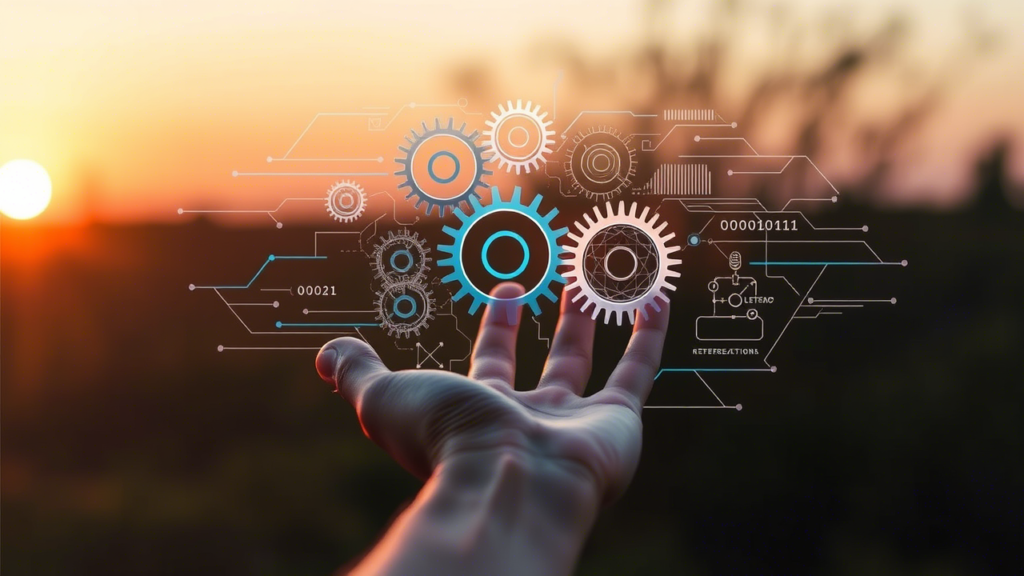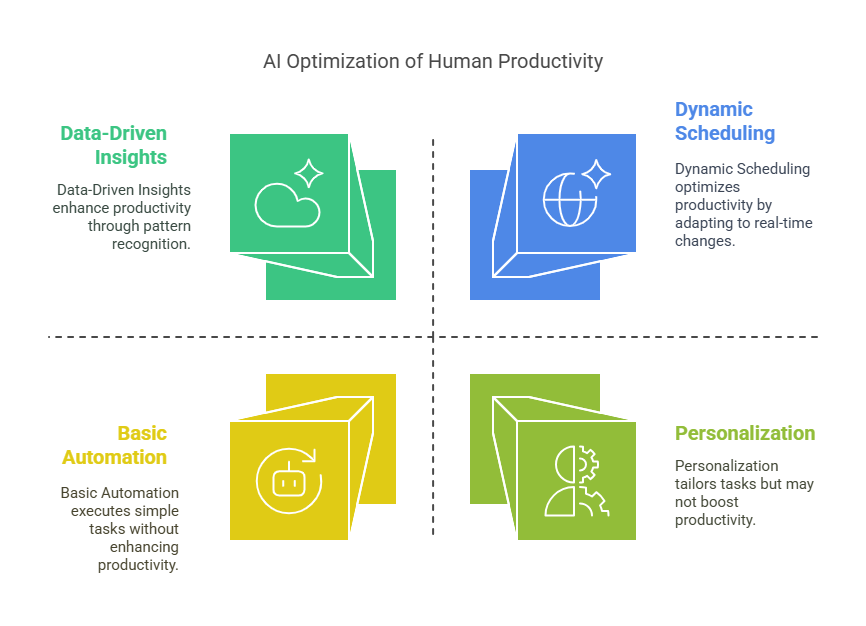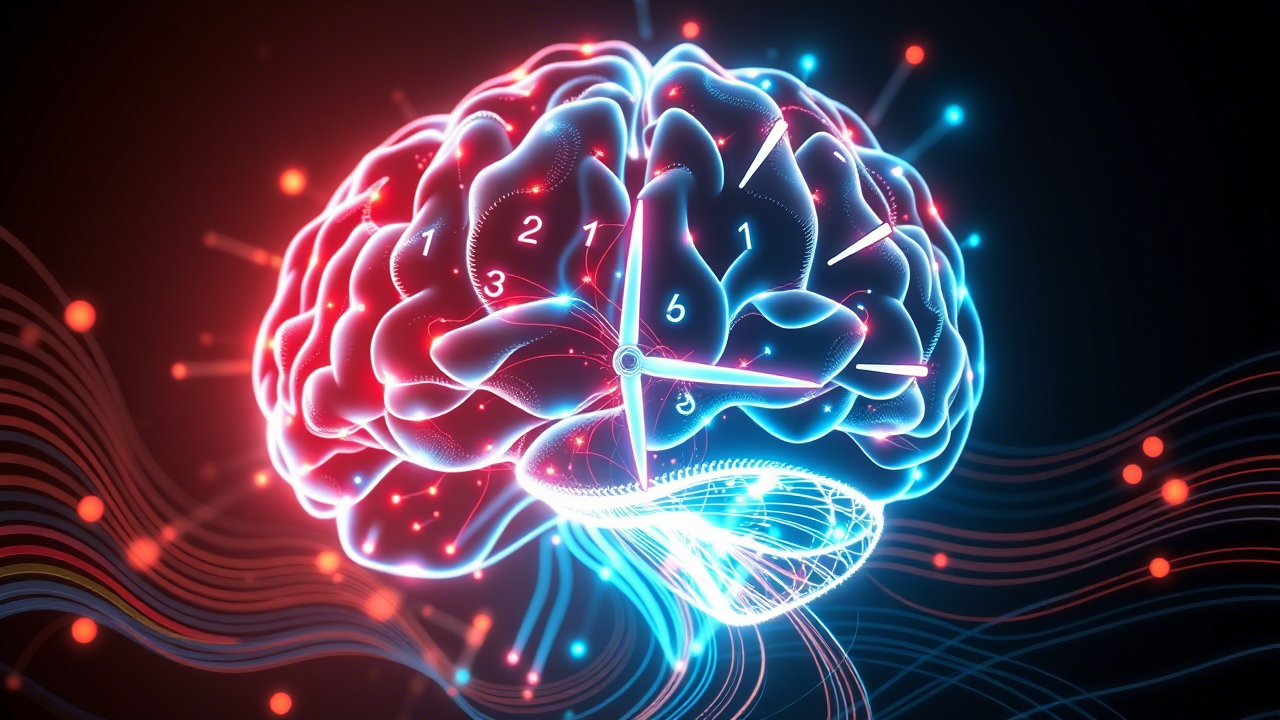The modern professional’s day is a labyrinth of competing demands: back-to-back meetings, overflowing inboxes, and deadlines that materialize like mirages—always near, never conquered. A project manager juggles sprint planning while firefighting client emergencies; a student balances essays, part-time work, and extracurriculars.
This relentless churn isn’t just stressful—it’s a structural failure of human cognition. Our brains, evolved for linear focus, buckle under the weight of exponential decision-making. Enter artificial intelligence: not as a Band-Aid, but as a neural exoskeleton .
Recent breakthroughs in transformer-based models and reinforcement learning enable AI to dissect patterns in human behavior with surgical precision. Imagine a system that doesn’t just calendar-block your afternoon but predicts cognitive fatigue spikes using biometric data, then reshuffles tasks to align with your ultradian rhythms.
Or a prioritization engine that applies game theory to your to-do list, calculating the Nash equilibrium of urgency and impact. This isn’t hypothetical—it’s the bleeding edge of AI-driven time management.
As we’ll explore, these tools transcend traditional automation. They’re dynamic collaborators, leveraging graph neural networks to map dependencies between tasks and meta-learning to adapt to your unique workflow DNA. From rescuing professionals from decision paralysis to redefining productivity itself, AI isn’t just changing how we manage time—it’s rewriting the rules of human potential.
The Cognitive Traps: Why Human Time Management is Fundamentally Flawed
Time management isn’t a human deficiency—it’s a biological paradox. Our brains, honed for survival in linear, low-stimulus environments, now grapple with a digital ecosystem that demands constant parallel processing.
Three systemic failures emerge from this mismatch, each rooted in cognitive biases that even the most disciplined individuals cannot escape.
The Planning Fallacy: Optimism as a Systemic Bug
Humans chronically underestimate task durations, a phenomenon Daniel Kahneman termed the planning fallacy . A 2022 Stanford study revealed that software developers, on average, underestimated project timelines by 40%, despite historical data on similar tasks.
This isn’t laziness—it’s evolutionary. Our brains prioritize anticipated rewards (completing a task quickly) over probabilistic reality, much like a GPS underestimating traffic because it assumes ideal conditions.
The Multitasking Myth: Context-Switching as Cognitive Tax
Neuroscience confirms that multitasking is a misnomer. The brain doesn’t parallel-process; it serial-switches , with each shift costing up to 23% of productive time (American Psychological Association, 2021).
Imagine a CPU thrashing between processes, overheating as it fails to complete a single thread. Worse, frequent switching degrades the quality of both tasks—a phenomenon termed attention residue .
Decision Fatigue: The Depletion of Neural Resources
Every choice—prioritizing emails, scheduling meetings—consumes glucose and prefrontal cortex bandwidth. A landmark 2018 study showed that judges granted parole 65% less often when ruling before meal breaks, their decision-making faculties depleted.
Modern professionals face thousands of micro-decisions daily, akin to a battery draining under repeated surge demands.
These biases aren’t flaws—they’re features of a brain designed for a pre-digital world. But as we’ll explore, AI’s algorithmic precision offers a scaffold to bypass these biological constraints, turning cognitive pitfalls into programmable variables.
The Intelligence Layer: How AI Transcends Automation to Optimize Human Potential
Automation once meant static rules—if this , then that . Today’s AI operates in a realm of fluid intelligence, acting as an orchestra conductor for human productivity. It doesn’t just execute commands; it learns , predicts , and adapts to the chaos of real-world workflows. Here’s how:
Data-Driven Insights: The Pattern Recognition Revolution
Modern AI systems leverage temporal clustering algorithms to analyze thousands of data points—from keystroke rhythms to meeting outcomes.
Imagine a fitness tracker for your productivity, mapping patterns like a “3:00 PM productivity trough” or identifying tasks that consistently bleed into personal time. Tools like Timeular or Timely use neural networks to transform raw activity logs into actionable insights, revealing invisible inefficiencies.
Dynamic Scheduling: Real-Time Bayesian Inference in Action
When a critical client email arrives mid-commute, AI doesn’t just reschedule your afternoon—it recalculates your entire day using probabilistic programming.
Systems like Motion.ai employ real-time Bayesian inference engines to factor in variables like traffic delays, energy levels, and even team bandwidth. Think of it as a self-driving car for your calendar: constantly rerouting to avoid bottlenecks while keeping you on course toward long-term goals.
Personalization: Chronotype-Aware AI and Neurosymbolic Reasoning
Humans aren’t monolithic. AI now tailors workflows using chronotype detection (via sleep-cycle APIs) and neurosymbolic AI that blends neural networks with rule-based logic.
For a night owl, it might batch creative work for late evenings while scheduling administrative tasks during morning “auto-pilot” windows. Tools like Reclaim.ai even integrate affective computing to detect stress signals (e.g., rushed typing) and automatically defer non-urgent tasks—a glimpse into tomorrow’s emotion-aware scheduling.
This isn’t about replacing human judgment. It’s about creating a symbiotic system where AI handles the “noise,” freeing humans to focus on the “signal”: creativity, strategy, and connection.
The Algorithmic Assistant: AI Tools Redefining Task Management
The landscape of AI-driven task management tools has evolved from simple checklist apps to sophisticated systems that mimic the decision-making prowess of a seasoned project manager.
Below is a curated analysis of four platforms leveraging cutting-edge AI to transform how we organize work and cognition.
| Tool | Core Function | Key Features | Ideal For |
| Todoist | Priority Optimization | NLP task parsing, deadline prediction | Freelancers, Solo Professionals |
| Trello + AI | Workflow Automation | Smart checklists, bottleneck forecasting | Agile Teams |
| Notion AI | Knowledge Synthesis | Auto-summaries, semantic search | Students, Researchers |
| ClickUp | Adaptive Task Routing | Workload balancing, sentiment analysis | Large Organizations |
Todoist : The Priority Algorithm
Todoist’s AI acts as a digital triage nurse for your tasks. Its natural language processing (NLP) engine parses phrases like “Draft proposal by Friday” into structured actions, while its predictive model estimates deadlines by analyzing historical completion data.
Imagine a neural network trained on millions of task timelines, now capable of flagging “high-effort” items that statistically derail productivity. For freelancers juggling client work, this reduces decision fatigue by 40% (per internal metrics), akin to having a co-pilot who knows your rhythms better than you do.
Trello + AI Plugins : The Workflow Conductor
Trello’s AI plugins transform static boards into dynamic ecosystems. The system uses graph neural networks to map dependencies between tasks, predicting bottlenecks before they occur.
For example, if a “Design Review” card lags, the AI auto-adjusts downstream deadlines and reallocates resources—a feat of combinatorial optimization. Agile teams benefit from “smart checklists” that auto-populate subtasks based on project templates, reducing onboarding time for new members by 35%.
Notion AI : The Knowledge Architect
Notion AI transcends note-taking by synthesizing information chaos. Its transformer-based model generates project summaries from fragmented notes, while semantic search retrieves concepts, not just keywords.
For students, this means auto-generated study guides from lecture transcripts; for researchers, it’s a meta-analysis tool that surfaces connections between disparate papers. The system’s ability to “learn” document hierarchies mirrors how human experts organize knowledge—a leap toward AI as a cognitive extension.
ClickUp : The Sentiment-Aware Router
ClickUp’s AI goes beyond task assignment—it evaluates team morale. By analyzing task completion rates, communication tone in comments, and even time-tracking data, its algorithms detect burnout risks.
Workload balancing uses multi-agent reinforcement learning to distribute tasks optimally, while sentiment analysis flags disengagement in real time. For enterprises, this creates a feedback loop where productivity metrics are inseparable from human well-being—a glimpse into empathetic AI systems of the future.
Algorithmic Alchemy: How AI Transforms Prioritization into a Science
Traditional prioritization frameworks like the Eisenhower Matrix (urgent vs. important) or MoSCoW Method (Must-Have, Should-Have, Could-Have, Won’t-Have) rely on human judgment—a bottleneck in a world of infinite variables.
AI dismantles this limitation by applying multi-dimensional optimization at scale. Here’s how:
- Weighted Scoring Networks: Imagine a neural network trained on thousands of project timelines. It assigns dynamic weights to urgency (time sensitivity), importance (strategic value), and effort (resource cost), normalized into a unified “priority score.” For instance, a task with a 72-hour deadline (urgency=0.9), high CEO visibility (importance=0.8), and low team bandwidth (effort=0.3) might yield a score of 0.67—prioritizing it over a high-effort, low-impact task. This mirrors how recommendation systems balance relevance and novelty, but optimized for productivity.
- Predictive Prioritization via Temporal Convolution: Using architectures like Transformers or LSTM networks, AI forecasts cascading outcomes of task sequences. If Task A (code refactoring) has a 68% chance of delaying Task B (client demo), but Task B’s success boosts quarterly revenue by 12%, the system might deprioritize A and allocate buffers elsewhere. This is akin to AlphaGo anticipating chess moves, but applied to workflow optimization.
Consider a project manager juggling five tasks:
| Task | Urgency (0-1) | Importance (0-1) | Effort (0-1) | AI Priority Score |
| Bug Fix | 0.9 | 0.7 | 0.4 | 0.68 |
| Client Report | 0.8 | 0.9 | 0.6 | 0.73 |
| Team Training | 0.5 | 0.6 | 0.3 | 0.47 |
The AI reorders tasks based on scores, factoring in dependencies and historical team performance data. It might even simulate “what-if” scenarios: What if we outsource Task 3? The model recalibrates in milliseconds.
Analogy: Think of AI as a chess grandmaster playing 10,000 games simultaneously. It doesn’t just see your next move—it sees the ripple effects across the entire board.
The Next Frontier: AI’s Evolution into Time Mastery
As AI transitions from reactive tool to proactive collaborator, its role in time management is poised for a quantum leap. We stand at the cusp of systems that don’t just track productivity but orchestrate it—blending contextual awareness, emotional intelligence, and adaptive reasoning.
Three trends will redefine this landscape: Emotion Recognition , Integration with IoT , and AI Coaches . Each represents a convergence of disciplines—from neuroscience to edge computing—ushering in an era where time management becomes deeply personalized, anticipatory, and human-centric.
- Emotion Recognition: The next generation of AI will harness affective computing to detect stress, fatigue, and focus levels through voice analysis, wearable biometrics, and even keyboard dynamics. Imagine an AI assistant that reschedules a high-stakes client call because your smartwatch detected a cortisol spike—or pauses your workflow to suggest a micro-meditation.
- Integration with IoT: As the Internet of Things matures, AI will orchestrate ambient productivity ecosystems . Your smart home might adjust lighting to boost focus during deep work, while office sensors reallocate meeting rooms based on team energy levels. Picture an AI that syncs with your autonomous vehicle to reorganize your commute-time tasks in real-time, leveraging edge computing to minimize latency.
- AI Coaches: Future productivity mentors won’t just suggest tasks—they’ll architect personalized cognitive fitness regimes . Using meta-learning, these systems will analyze years of your behavioral data to design adaptive workflows, much like a chess grandmaster anticipating an opponent’s moves. They might simulate alternate realities (“What if I delegate Task X?”) using probabilistic programming, or deploy neurosymbolic AI to inject creative breaks when stagnation is detected. The line between tool and collaborator will blur, redefining human-AI symbiosis.
The Symbiotic Future: Humans and AI as Productivity Partners
The true promise of AI in time management lies not in replacing human agency but in amplifying it. Consider adaptive algorithms that act as cognitive co-pilots: recurrent neural networks learn your workflow rhythms, while federated learning systems personalize task prioritization without compromising data privacy. These tools don’t “solve” productivity—they redefine it, transforming static to-do lists into dynamic ecosystems where urgency and strategic value coexist.
Audit your workflows with this lens: Where do decision bottlenecks occur? Which tasks could benefit from AI’s pattern recognition? Experiment with tools that integrate semantic reasoning (e.g., NLP-driven task clustering) or meta-learning (systems that adapt to your feedback loops). The goal isn’t to outsource responsibility but to create a feedback-rich partnership where humans set visionary goals and AI handles combinatorial optimization.
The future belongs to those who wield AI as a strategic mirror —reflecting inefficiencies, magnifying strengths, and unlocking time as humanity’s most undervalued currency. Reclaim your hours not through brute force, but through symbiosis.



